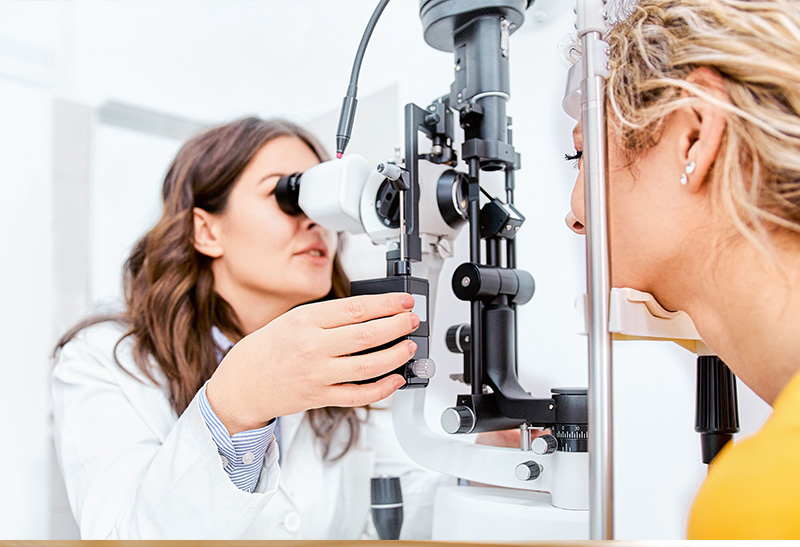All Categories
Featured
We commonly hear concerning protecting our skin from hazardous ultraviolet (UV) rays, but did you know that UV exposure can likewise significantly impact your eye wellness? Whether you're outdoors on a warm day or also throughout cloudy weather, your eyes are constantly revealed to UV radiation. Prolonged direct exposure can raise the danger of different eye conditions, a few of which might bring about long-term vision damage. Recognizing the results of UV rays on your eyes and how to safeguard them is important for maintaining long-lasting eye wellness.
Kinds Of UV Rays. UV rays are identified right into three kinds:
UVA Rays: These rays pass through deep into the skin and can also affect the internal layers of the eyes. UVB Rays: These rays primarily create damage to the skin's surface area yet can also harm the cornea and lens of the eye. UVC Rays: While these are one of the most dangerous, they are largely absorbed by the Planet's ambience and do not get to the surface area. Both UVA and UVB rays are damaging to your eyes, and gradually, exposure can lead to major eye problems.
Short-Term Impacts of UV Exposure. Also short direct exposure to intense UV rays can cause prompt eye damages. An usual short-term problem is photokeratitis, often referred to as "sunburn of the eye." Signs and symptoms of photokeratitis consist of:
Redness and irritation. Level of sensitivity to light. Tearing or watery eyes. An abrasive feeling, as if something is embeded your eye. While the signs of photokeratitis are short-term and generally settle within a day or two, duplicated cases can have advancing impacts on your vision.
Long-Term Effects of UV Exposure. Chronic UV exposure can add to several serious eye conditions, including:
Cataracts: With time, UV rays can cause clouding of the eye's lens, causing cataracts, among the leading reasons of blindness worldwide.
Macular Deterioration: Prolonged UV direct exposure can harm the retina, particularly the macula, resulting in age-related macular deterioration (AMD), which impacts main vision.
Pterygium: Additionally called "surfer's eye," this condition includes the growth of a fleshy cells on the white component of the eye, which can expand over the cornea and influence vision.
Skin Cancer Around the Eyes: The fragile skin around the eyes is vulnerable to UV radiation, raising the danger of skin cancer cells, such as basal cell cancer.
Pinguecula: UV exposure can likewise lead to yellowish down payments on the conjunctiva, which can trigger inflammation and discomfort.
How to Protect Your Eyes from UV Rays. Put On Sunglasses with UV Security: Always pick sunglasses labeled as obstructing 100% of UVA and UVB rays. Wrap-around styles give added defense by obstructing UV rays from the sides.

Use a Wide-Brimmed Hat: Hats with a wide border can decrease UV direct exposure by approximately 50%, offering extra protection for your eyes and face.
Prevent Optimal Sunlight Hours: UV rays are toughest in between 10 a.m. and 4 p.m. Limiting your outdoor activities throughout these hours can aid reduce exposure.
Don't Fail To Remember Regarding Children: Kid's eyes are much more conscious UV rays, so ensure they put on sunglasses and hats when outdoors.
Use UV-Blocking Call Lenses: If you put on get in touches with, ask your eye care supplier about UV-blocking lenses for added defense.
Stay Protected Year-Round: UV damage isn't limited to summer; rays can mirror off surfaces like water, sand, and snow, making eye protection required all year.
Verdict. Protecting your eyes from UV rays is important to protecting your vision and total eye wellness. By taking simple preventative measures like wearing UV-protective sunglasses, restricting direct exposure during height hours, and regularly visiting an eye care specialist, you can guard your eyes from the harmful results of UV radiation.
Latest Posts
Explore Best Car Repair Solutions at Montclare Auto Repair – Reliable Repairs Await
Learn Why Chicago Drivers Select Montclare Auto Repair for Reliable Service and Significant Savings
Secure Your Home with Quality Residential Roof
More
Latest Posts
Explore Best Car Repair Solutions at Montclare Auto Repair – Reliable Repairs Await
Learn Why Chicago Drivers Select Montclare Auto Repair for Reliable Service and Significant Savings
Secure Your Home with Quality Residential Roof